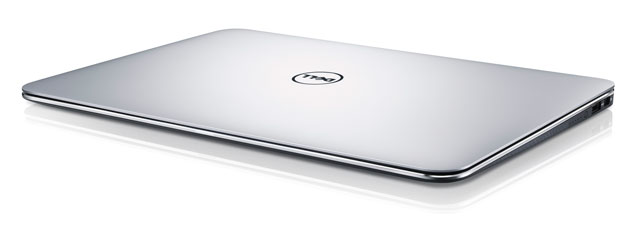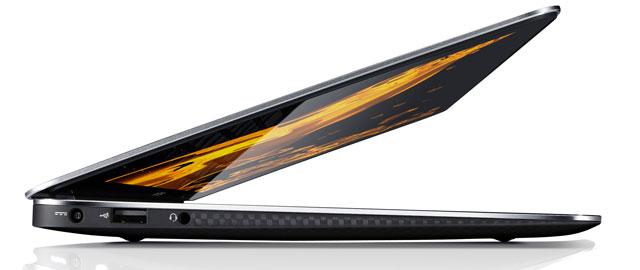
The Ultrabook wave is growing rapidly, with every major manufacturer now offering an ultra-portable range of thin and lightweight laptops with potent processors and the speed benefits offered by solid-state drives.
Dell’s latest foray into the Ultrabook market is in its XPS range. With it, the US computer manufacturer has not only made a range of compact laptops that pack serious fire power, but machines that are also elegantly designed.
There was a time when Dell devices graced the desks of most large companies and the laptop bags of most top executives. Renowned for highly customisable devices, speedy delivery and superlative service, Dell was a shining light in enterprise computing — and then something changed.
It’s hard to pinpoint when Dell went from being de facto to somewhat derided, and from lauded to dismissed as bland and dull. But with the XPS range, the company really is trying to turn that image around. With the exception of a couple of curious design choices, the XPS 13 is an exceptional machine. It’s not only attractive on the surface, but boasts a similarly impressive interior — for a price.
Costing R14 999 for the entry-level i5 model and going up to R18 999 for the top-end Intel Core i7-packing powerhouse, the XPS 13 isn’t the cheapest laptop on the market by any stretch of the imagination. Moreover, it’s considerably more expensive than it would be if one were to buy it in the US. Stateside, the entry-level model costs US$1 000, with a price tag of $1 500 for the high-end version.
We reviewed the top-end model, complete with that i7 processor, a 256GB Samsung solid-state drive and 4GB of RAM. The entire range offers a 13,3-inch display with a resolution of 1366×768 and comes with Windows 7 preinstalled. Our review unit had Windows 7 Professional with a couple of overlays we could have done without, including a desktop slider of icons with shortcuts to image, music and video folders.
The display is good but not astounding. Though it can manage 720p video and offers a 16:9 aspect ratio, it offers lower resolution than the more popular 1440×900 option seen on many of its rivals. Although the screen isn’t bad, the pixels are definitely more noticeable than on some competitors’ offerings. This is disappointing on a device with such a hefty price tag, particularly as the display is such an integral part of the ultimate user experience.
Thanks to a very small bezel surrounding it, in use the XPS 13 feels every bit the professional device, even though it’s extremely compact. Dell suggests its aim with the XPS was to create a 13-inch laptop in an 11-inch form factor.
Despite being a mere 6mm at its thinnest point and 18mm at its thickest, the XPS 13 doesn’t feel at all flimsy. This is thanks to its aluminium and carbon fibre exterior and Gorilla Glass screen. The build quality carries over to the back-lit keyboard, which, although covered in a horrid modernist font, is responsive and quiet. The large glass touch pad is also excellent and supports gestures and multi-finger touch.
The surfaces surrounding the trackpad and keyboard feel somewhat rubberised, and, although comfortable, it also tends to show dirt and scratches more than metallic alternatives. The bottom of the laptop suffers from a similar design decision, with a thin, translucent layer of rubber covering the carbon-fibre shell. However, in both instances it’s a minor gripe about an otherwise excellent device.

Dell does, however, win all sorts of design points for choosing to cover all of the various specification and verification stickers it’s obliged to include somewhere on the device beneath a metal plate on its undercarriage. Aside from the font on the keyboard, the XPS is an excellent example of the minimalist design that’s so long been a part of Apple’s visual style and that’s becoming more common from PC laptop manufacturers.
In terms of ports, the XPS offers a 3,5mm audio jack and USB 2.0 alongside the power input on the left-hand side. There’s also a USB 3.0 and mini DisplayPort input on the right. While we’d like to see an additional USB port — or at least two USB 3.0 ports rather than one — or an SD card reader, there really is very little space on the device, particularly as it tapers so much towards the front that it’s actually too thin to accommodate even a USB port.
At 1,36kg, the XPS weighs almost exactly the same as the MacBook Air, the ultraportable range to which all others are still compared. It’s also taken a cue directly from Cupertino with the inclusion of a strip of LEDs on the right-hand side of the device along with a button to display available battery life — this looks like it was lifted wholesale from Apple’s MacBook range.
Battery life is good for so compact a device, offering around five hours, even under strenuous use with Wi-Fi enabled. Turn down the display’s brightness — using the function keys — and limit any unnecessary apps and you’ll probably add an hour or two to that.
Thanks to the inclusion of a solid-state drive, boot time is a speedy 15 seconds and waking the XPS from sleep takes a couple of seconds at most. Add the i7 processor into the mix and you get a laptop that opens apps almost instantly and flicks between them without a whiff of hesitation. Opening data-heavy files like RAW images is similarly lag-free making it a great device for the digital nomad who still wants a machine that can offer high-end performance.
Unfortunately, the power cable includes a sizeable transformer. This seems to be the one area where manufacturers are still struggling to shrink components, but with the substantial battery life there will be times the cable can be left behind.
Overall, the XPS provides a first-class user experience in a largely attractive package. Arguably, the only real disappointment is the display. For a device that costs more than many of its competitors, the display sticks out like a sore thumb.
Still, there’s nothing dull about this Dell. That’s a good thing when it comes to the design and functionality, but a bad thing when it comes to the price. — (c) 2012 NewsCentral Media




